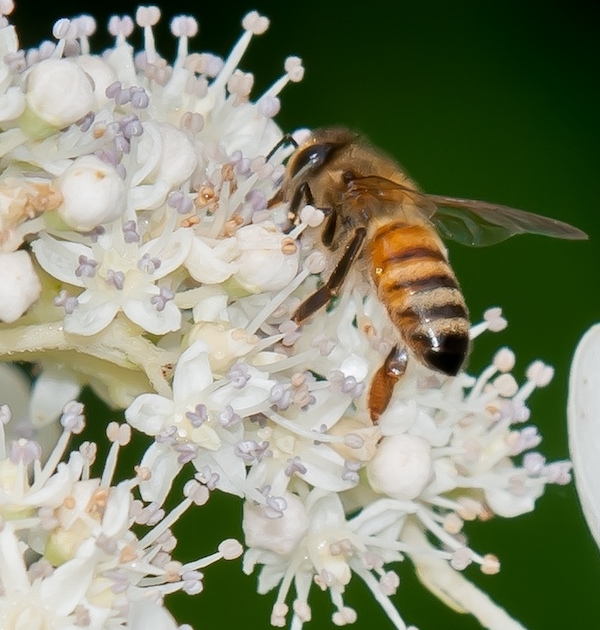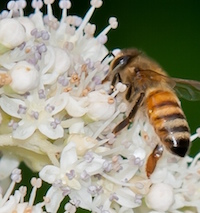Move over bird-watchers! Backyard insect-watching has become a popular pastime thanks to the public’s increased interest in pollinator health and habitats.
Gardeners enjoy seeing insects visit their gardens. Learning about the types of the bees and the wing colors of migrating butterflies can enrich the pollinator experience in the home garden.
To get the best view of insect activity, monitor them on a warm, sunny day. Insects fly more readily when the sun is shining. Place a chair near the garden, grab a cool drink and enjoy the show. Remember that the zoom feature on your cell phone can serve as a magnifier. Zooming in on small wings or compound eyes can be fascinating.
A pollinator habitat full of different types of flowers of varying shapes, colors and heights will attract a wide variety of insects. You can easily spot carpenter bees with their shiny abdomens and southern carpenter bees with wings that appear to be metallic blue.
Even if you’re not a beekeeper, you may find honeybees using your garden for nectar and pollen. Honeybees will fly miles from their hive looking for flowers.
Watch for smaller bees, too. Some native bees, like orchard bees, are metallic in color and are fun to spot. Leafcutter bees gather pollen using hairs on the undersides of their abdomens. They are the bees with a bright orange, white or even green undercoat.
Fuzzy bumblebees are always interesting to watch. You will learn to differentiate between types by their sizes and colorings. Watch how they extract the pollen from the flower through what’s called “buzz pollination” — they vibrate their bodies to get the most pollen from each bloom.
Wasps found in the garden have interesting body shapes. Thread-waisted wasps are so thin in the middle, you will wonder how their internal organs can function. Remember, if you calmly watch the wasps, they will not be interested in stinging you. Just don’t agitate them!
Bee mimics, or flower flies, are often found in pollinator habitats. These are actually flies with coloring that resembles the coloring of bees. The flies have little antennae and their eyes are often larger and closer together than a bee’s eyes. Further, flies only have one pair of wings while bees have two pairs. This is hard to notice when the insects are darting about.
Your pollinator habitat will also attract some interesting predators. Praying mantis and ambush bugs often hang out in the flowers looking to capture an insect or two. Parasitic wasps also visit flowers, so you might find them in your pollinator habitat. These beneficial wasps are powerhouses in the vegetable garden as they help control insect pests.
Insect-watching can also be a fun family activity. Teaching the next generation to appreciate these insects leads to responsible pollinator stewardship. Georgia’s pollinator protection plan, “Protecting Georgia Pollinators,” reminds us that we all have a role to play if we want to continue to enjoy the services of these wonderful insects.
You can read the plan at https://t.uga.edu/4iR.
To expand your insect-watching hobby, consider having your garden certified as a Georgia Pollinator Space. Learn more at www.ugaurbanag.com/pollinators.
In 2019, University of Georgia Cooperative Extension will conduct the Great Georgia Pollinator Census, a citizen science initiative. Participate by going to www.GGaPC.org.
If you need help identifying an insect, contact your local UGA Extension office at 1-800-ASK-UGA1.








